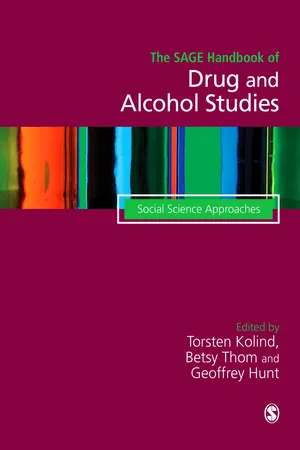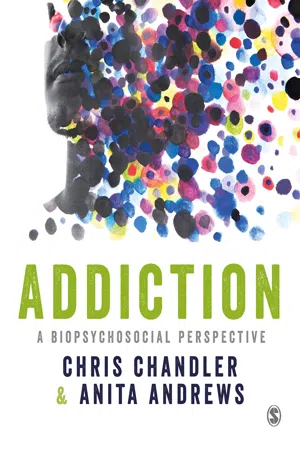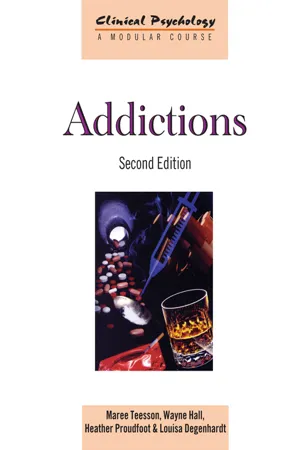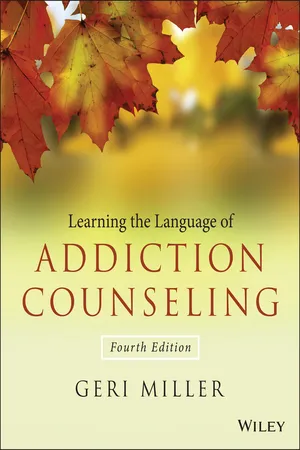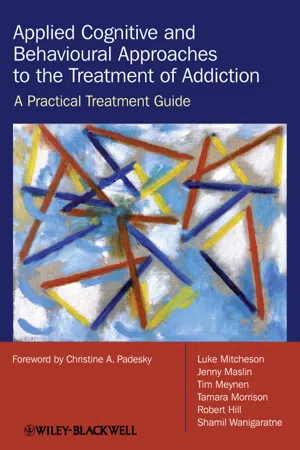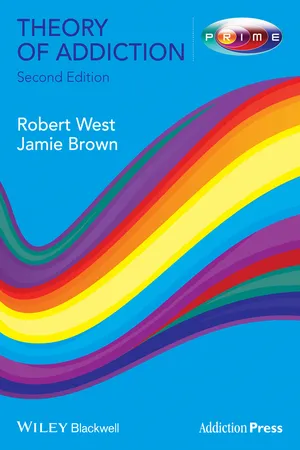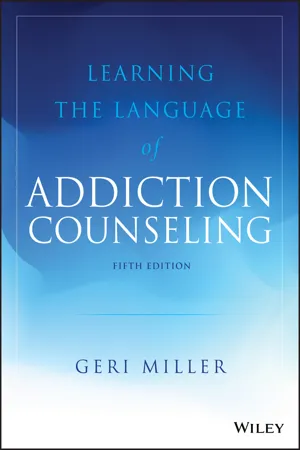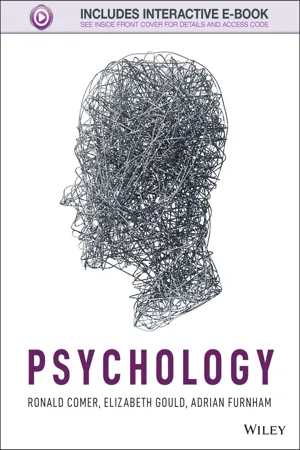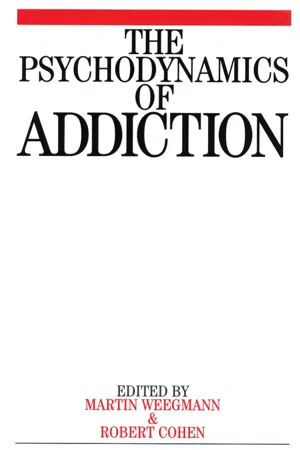Psychology
Addiction Treatment Theories
Addiction treatment theories encompass various psychological approaches aimed at understanding and addressing addictive behaviors. These theories include cognitive-behavioral models, which focus on changing thought patterns and behaviors related to addiction, as well as motivational interviewing, which aims to enhance an individual's motivation to change. Additionally, the biopsychosocial model considers the interplay of biological, psychological, and social factors in addiction treatment.
Written by Perlego with AI-assistance
Related key terms
1 of 5
12 Key excerpts on "Addiction Treatment Theories"
- eBook - PDF
- Ed Day(Author)
- 2021(Publication Date)
- RCPsych Publications(Publisher)
Chapter 8 Psychological Approaches to Addiction Rob Hill and Jennifer Harris Introduction Psychological theory and practice have a lot to offer in terms of understanding addictive patterns of behaviour, yet despite the theoretical advances that have occurred over the years, change at the individual level often remains slow and precarious. Motivation to change sometimes appears as a magical moment seemingly unrelated to the severity of symptoms, and when change does occur it often follows what Marlatt and his colleagues have called ‘the rocky road to recovery’. White has acknowledged this problem and notes that while there have been many advances in our knowledge and treatment of addictions, not least in the field of cognitive behavioural therapy (CBT), there are still limitations in the efficacy of addictions treatment [1]. Thus, some clients, generally those whose substance use is part of a broader cluster of problems, quickly relapse after treatment. This finding has led to a call for a reorientation of treatment away from an acute care model to a recovery management model or what White calls ‘focusing on the lived solution’. Put simply, tackling dependency, while an important first step in the process of change, is rarely sufficient to maintain change over time or indeed to necessarily create a better life. Thus, many self-help groups are increasingly focusing on what is known as ‘recovery capital’, which refers to the sum of resources necessary to initiate and sustain recovery from substance misuse. As such it conveys a more positive way of conveying to clients the reasons for ensuring a robust relapse prevention strategy. Theories and Interventions for Addictive Behaviour Psychoanalytic Theories of Addiction Psychoanalysis, as conceived by Freud, is both a theory and a treatment which seeks to understand conflicting elements or parts that often remain hidden or inaccessible (uncon- scious) to an individual without treatment. - eBook - ePub
The SAGE Handbook of Drug & Alcohol Studies
Social Science Approaches
- Torsten Kolind, Betsy Thom, Geoffrey Hunt, Torsten Kolind, Betsy Thom, Geoffrey Hunt, Author(Authors)
- 2016(Publication Date)
- SAGE Publications Ltd(Publisher)
Psychological formulations of addiction typically view the behaviour as serving some function for the individual, for instance, a desire for social belonging, euphoria or relief from negative emotions. Behaviourist theories focus on external contingencies driving forward addiction, whereas others focus more on individual vulnerabilities such as mental health, inadequate coping skills or cognitive deficits; still others, such as psychodynamic theories, focus more on universal but distorted unconscious developmental patterns. Inconsistencies between goals, thoughts, feelings and behaviours, also raises intriguing questions about the interplay of conscious, controlled responses, sometimes referred to as ‘explicit social cognition’, and non-volitional drives that are unconscious, automatic responses or so called ‘implicit social cognition’.Our current understanding of addiction tends to adopt elements from a number of theories and in this chapter we focus on: (i) psychodynamic thinking; (ii) behavioural theory; (iii) social learning theory; (iv) cognitive theory; (v) dual process perspectives; (vi) the role of personality and mental health; and (vii) neurobiological and neuropsychological markers. We then introduce addiction-specific models that integrate psychological thinking into an overall framework centred around: (i) motivation; (ii) excessive appetites; and (iii) relapse prevention.Psychodynamic theories of addiction
Psychodynamic theories provided one of the earliest ways of thinking about addiction. Different schools of psychoanalytic thinking have different theories as to how the personality is shaped, psychopathology develops and change takes place. However, they all share a common belief that our current feelings, thoughts and experiences are affected by our early life experiences and that some of our mental activity is unconscious. Addiction is thought to relate to early experiences of deprivation or over-indulgence, which results in unmet attachment needs, disturbances in the sense of self and difficulties with drive and affect, self-care, dependency and need satisfaction. - eBook - ePub
Addiction
A biopsychosocial perspective
- Chris Chandler, Anita Andrews(Authors)
- 2018(Publication Date)
- SAGE Publications Ltd(Publisher)
addiction should be able to account for the key features of addiction including: individual susceptibility; its development and maintenance; how it is experienced physically and psychologically (features such as tolerance, craving, impulsive and compulsive use); and be able to suggest possibilities for treatment. Ideally a good theory should generate testable hypotheses. This is extremely challenging because it is very difficult to design studies in this field which accurately represent experiences in the real world (ecologically valid experiments). This is because in addition to societal and cultural impacts, addiction is experienced on an individual level, as a personal conflict, in individually triggering and personal environments. As a result of this complexity, most theories of addiction help us to understand one part of the picture more clearly without necessarily adequately addressing the other parts. Although the different theories in this chapter are organised under different subheadings for clarity, it will become evident that there is substantial overlap between theories and between attempts to explain observations. Different theories may incorporate widely applicable observations and offer distinct but mutually supportive explanations. It is difficult to experimentally evaluate all levels of analysis simultaneously. The first section will provide a broad overview of the disease or biomedical model of addiction, briefly tracing its history through alcohol and opioids to the current conceptualisation of the ‘disease’. The inclusion of the disease model in a chapter on psychological theories of addiction serves to illustrate the interrelationships between psychological processes and their biological underpinnings (see Chapter 3 for the neural systems involved). The next section will focus on theories which emphasise the role of choice and the influence of cognitive processes such as attention, perception and memory in driving addictive behaviour - Available until 17 Jan |Learn more
Addictions Counseling Today
Substances and Addictive Behaviors
- Kevin G. Alderson(Author)
- 2019(Publication Date)
- SAGE Publications, Inc(Publisher)
model. Over the past century, addiction models have flourished, but each has failed to build upon what was addressed earlier by other theories. Theory ought to inform treatment, and a good theory coexists with empirically validated treatments.The theories described in this chapter include the moral/choice model, biological/disease theories, psychological theories, family models, sociocultural theories, postmodern theories, and the biopsychosocial model. A brief discussion followed each theory with a look at the role of the counselor using each approach, the strengths of the approach, and its limitations.The moral/choice model was the first pervasive addiction theory, which stigmatized addicted individuals as it focused on their sinful nature. Eventually, this view morphed by some into viewing addicted individuals as people with free will who continued making bad choices despite their self-evident maladaptive behaviors.Chronologically, the ever-popular biological/disease theories followed, which fortunately helped remove the stigma as addicted individuals were now seen as ordinary people who experienced a disease comparable to others with physical diseases. Genetic and neuroscience research continues to support this view of addictions.Four psychological theories were considered, including the (a) psychodynamic theories that focus on clients’ pasts in explaining their addictions, (b) behavioral/learning theories that contend that addictions are learned behaviors that can be unlearned, (c) cognitive-behavioral theories that provide several reasons (i.e., cognitions) that perpetuate addictive behaviors, and (d) personality theories that purport that people become dependent because they have “addictive personalities.” Each theory helps explain the mystery of addictions.Other researchers and counselors subscribe to a family/systems theory perspective. In this approach, the “identified” client represents an endemic problem shared with other family members. The three predominant models that use a systems approach are the behavioral, family systems, and family disease models. Each model advocates different approaches for helping families improve and possibly heal from addiction (and other problems that originate from the family dysfunction). - eBook - ePub
- Maree Teesson, Wayne Hall, Heather Proudfoot, Louisa Degenhardt(Authors)
- 2013(Publication Date)
- Psychology Press(Publisher)
Theories of addiction:Causes andmaintenance ofaddiction 4Overview: Theories of addiction
In attempting to explain why people become dependent on drugs, theories tend to emphasize either psychobiological or psychosocial approaches. Psychobiological approaches include both neurobiological and genetic explanations of addictive behaviour. Psychosocial approaches focus on explanations that involve learning models and individual differences, usually while taking into account the cultural and environmental factors that make drug dependence more likely. There are a variety of theories regarding the question of why people become dependent on drugs, and it is likely that these are not mutually exclusive. It is clear that we need an approach that synthesizes these perspectives to have the greatest explanatory value (West, 2006).Physiological bases of addiction
Neuroscientific theories
Neuroscience with the aid of neuroimaging is gradually revealing how the brain changes as a consequence of the regular use of drugs. These changes suggest that chronic drug use produces persistent impairments in neurocognitive and motivational states (Carter, Capps, & Hall, 2009).Neuroscientific theories require an understanding of the effects of drugs on the brain. Box 4.1 outlines the actions of each of the major drug classes. Different drugs have different primary actions on the brain, but two major pathways – the dopamine reward system and the endogenous opioid system – have been implicated as being common to the effects of most drugs of dependence (Koob & Le Moal, 2008; Nutt, Robbins, Stimson, Ince, & Jackson, 2007).Dopamine reward system
Neuroimaging has identified the multiple brain systems that are affected by psychoactive drug use. It is hypothesized that changes in these systems may explain the behaviour of drug-addicted people, specifically, their loss of control and compulsive drug taking, and their difficulty in sustaining abstinence and avoiding relapse to drug use. The dopaminergic pathway has dense connections to the fore-brain and the higher cognitive centres of the frontal cortex. Although it is not the only neural system in the brain affected by drug abuse, changes in these pathways are considered to be central to the development and maintenance of addictive behaviour (Carter et al., 2009). - eBook - ePub
- Geri Miller(Author)
- 2014(Publication Date)
- Wiley(Publisher)
Chapter 2 Theories of Counseling Applied to Addiction TreatmentPersonal Reflections
Our view of counseling is a reflection of our personal views, our professional training, and the client populations with which we have worked. Each of us needs to find a theoretical framework that clearly reflects our approach to counseling. It is easy to be swayed by charismatic “teachers” and “fads” that come and go, but our clients deserve better than this. They deserve to know and experience our counseling approach shortly after they meet us. They deserve, whatever the theoretical framework, to be treated with respect and care for their dignity and their humanity as they are invited to heal from the addiction with which they struggle and the scars from it that they carry and have caused in others.My biggest difficulty in this area of theories and techniques has been in the translation of them into addiction counseling work. Note that not everyone in the counseling field respects addiction counseling as a specialty area. I myself have been told by influential professionals that “anyone, anywhere, anytime, can teach anything on addictions.” I believe that is a potentially dangerous philosophy that speaks to a lack of awareness of the unique dynamics of addiction counseling.Instead we need to take the general counseling theories and techniques and apply them to the addicted client in a way that is healing for the client, not being in denial of or enabling their addiction. In the revision of this chapter, I emphasize the application of these theories and techniques as they relate specifically to the addicted client. As I propose such approaches, I encourage the reader to remember to only use these applied techniques if they are helpful to the client. As I tell my students, “If you go to use a technique and it does not seem to be working, just stop it because both you and the client know it is not being effective.” - eBook - PDF
Applied Cognitive and Behavioural Approaches to the Treatment of Addiction
A Practical Treatment Guide
- Luke Mitcheson, Jenny Maslin, Tim Meynen, Tamara Morrison, Robert Hill, Shamil Wanigaratne(Authors)
- 2010(Publication Date)
- Wiley(Publisher)
These concepts are explained more fully in Chapter 2. Therapies based on these ideas have also been developed to enable the addictive behaviour to be changed. The most effective of these is contingency management. Contingency management uses the principle of positive reinforce- ment to change substance-using behaviour by reinforcing abstinence from a spe- cific drug. This is done through the provision of a reward that has some meaning to a client. These can be considered as motivational incentives and may be house- hold goods, shop vouchers or prizes. Reward schedules can be constructed so that continued and sustained abstinence from a substance can be encouraged. The National Institute for Health and Clinical Excellence guideline on psychosocial interventions for drug misuse (NICE, 2007) recommends that contingency man- agement is implemented in drug treatment services in the UK and implementation studies are currently being trialled. Although a behavioural perspective on addiction suggests that where behaviour is learnt it can also be unlearnt, it does not ignore the biological origins of addic- tion or the social context in which substance use develops and occurs. This under- standing enables a variety of treatment goals to be negotiated with clients and worked towards in addition to total abstinence. These may include controlled use or goals informed by a harm reduction approach. These behavioural changes may be more acceptable to clients, enable early successes in treatment and may in themselves be important steps towards achieving abstinence. 2 Addiction emerges in an environmental context CBT recognises the environment and the client’s experience within this context. It is suggested that the availability of substances is a key factor in determining levels of dependency within specific populations. The influence of others and learn- ing from peers and parents can influence substance use and dependence. - eBook - ePub
- Robert West, Jamie Brown(Authors)
- 2013(Publication Date)
- Wiley-Blackwell(Publisher)
Hajek et al. 2005). The current theory predicts that it is unlikely that we will ever see a clear benefit for approaches to relapse that focus on just one technique. Interventions need to encompass as many of the following elements as possible: (a) setting in motion a radical change in identity, (b) where possible, remodelling the social and physical environment that the addict inhabits, and (c) providing long-term medication that dampens the addictive drives or enhances the addict's capacity for impulse control. 5. Pay particular attention to the temporal patterning of treatment : related to the above, the temporal patterning of pharmacological and psychological treatment will need to be tailored to the specifics of the underlying pathologies. In some rare cases, a single treatment episode that helps to ‘launch’ the recovery process into orbit will be sufficient. At the other extreme, chronic treatment will be needed to suppress the behaviour and minimise the imbalance in the motivational system but there will be no ‘cure’, just long-term management. An intermediate case will be the addict whose addiction can be helped into ‘remission’ but in which the conditions that led to the original imbalance remain so that the addiction will gradually re-emerge and re-treatment will be needed. 6. Use population-level interventions as treatment : the theory also implies that the distinction between population-level interventions to control a behaviour that for some people is addictive and treatment to assist addicts to control their behaviour needs to be reconsidered - eBook - PDF
Cognitive-Behavioural Therapy in the Treatment of Addiction
A Treatment Planner for Clinicians
- Christos Kouimtsidis, Paul Davis, Martine Reynolds, Colin Drummond, Nicholas Tarrier(Authors)
- 2007(Publication Date)
- Wiley-Interscience(Publisher)
Cognitive approaches pri-marily aim to change addictive behaviour through changes in faulty cognitions (e.g. dysfunctional beliefs) that serve to maintain the behaviour, or through the promo-tion of positive cognitions (e.g. self-efficacy) or motivation to change behaviour (Beck et al. , 1993). Commonly used approaches are cognitive therapy, relapse prevention and motivational enhancement therapy. Behavioural approaches primarily aim to modify behaviours underpinned by conditioned learning: classical and operant con-ditioning. Such approaches are many and varied, but include interventions aimed at extinguishing classically conditioned responding (e.g. cue exposure and response prevention), or are based on instrumental conditioning (e.g. community reinforce-ment or contingency management) in which positive non-drug taking behaviours are positively reinforced. Behavioural approaches involving aversive conditioning are historically important mainly in the alcohol treatment field, and have some evidence of efficacy, but are not used mainly for ethical reasons. Psychological interventions that incorporate cognitive and behavioural techniques have been shown to be effective in reducing or maintaining abstinence from most forms of substance misuse in a number of studies, either alone or in conjunction with pharmacological interventions. Psychosocial interventions is a term often ap-plied to therapies that aim to assist substance misuse behaviour change such as CBT and motivational interviewing (MI), therapies which are evidence based and have clear underlying principles (Wanigaratne et al. , 2005). The evidence on the ef-fectiveness of psychosocial interventions that incorporate cognitive and behavioural techniques in several of the main substances of dependence discussed in this chapter is summarized below. - eBook - ePub
- Geri Miller(Author)
- 2020(Publication Date)
- Wiley(Publisher)
2THEORIES OF COUNSELING APPLIED TO ADDICTION TREATMENTPERSONAL REFLECTIONS
This chapter is a natural outcome of examining the language we use in addiction counseling, the history of and influences on the field, and the model of addiction with which we affiliate. Our view of counseling is a reflection of our personal views, our professional training, and the client populations with which we have worked. Each of us needs to find a theoretical framework that clearly reflects our approach to counseling. It is easy to be swayed by charismatic “teachers” and “fads” that come and go, but our clients deserve better than this. They deserve to know and experience our counseling approach shortly after they meet us. They deserve, whatever the theoretical framework, to be treated with respect and care for their dignity and their humanity as they are invited to heal from the addiction with which they struggle and the scars from it that they carry and have caused in others. Our theoretical framework is critical in that it shapes our view of our client and their disease. That is why I explain my own theoretical framework: it is an example that the reader may find helpful.My biggest difficulty in this area of theories and techniques has been in the translation of them into addiction counseling work. Note that not everyone in the counseling field respects addiction counseling as a specialty area. I myself have been told by influential professionals that “anyone, anywhere, anytime, can teach anything on addictions.” I believe that is a potentially dangerous philosophy that speaks to a lack of awareness of the unique dynamics of addiction counseling.Instead we need to take the general counseling theories and techniques and apply them to the addicted client in a way that is healing for the client, rather than being in denial of or enabling their addiction. We need to develop a sensitivity for the dynamics of addiction so when we hear a client's story, we look at how addiction may be affecting them and their presenting problem. Therefore, in this chapter, I emphasize the application of these theories and techniques as they relate specifically to the addicted client. As I propose such approaches, I encourage the reader to remember to only use these applied techniques if they are helpful to the client. As I tell my students, “If you go to use a technique and it does not seem to be working, just stop it because both you and the client know it is not being effective.” - eBook - PDF
- Ronald Comer, Elizabeth Gould, Adrian Furnham(Authors)
- 2014(Publication Date)
- Wiley(Publisher)
The knowledge acquired is then used by clinicians, whose role is to detect, assess and treat people with psychological disorders. treatment, or therapy systematic procedures designed to change abnormal behaviour into normal behaviour. psychotherapy a treatment system in which a client and therapist use words and acts to overcome the client’s psychologi- cal difficulties. biological therapy the use of physical and chemical procedures to help people over- come psychological difficulties. Despite Frank ’s straightforward definition, clinical treat- ment is surrounded by conflict and confusion. Carl Rogers frequently expressed the opinion that therapists are not in agreement as to their goals or aims; they are not in agree- ment as to what constitutes a successful outcome of their work; they cannot agree on what constitutes a failure; and that the field seems to be completely chaotic and divided. Some clinicians view disorder as an illness and so con- sider therapy a procedure that helps cure the illness. Others see disorder as a problem in living and therapists as teachers of more functional behaviour and thought. Clinicians even differ on what to call the person who receives therapy. Those who see abnormality as an illness use the label patient, while those who view it as a problem in living refer to the client. This chapter will use both of these common terms inter- changeably. All agree therapy of some kind is necessary and will be effective to differing degrees. Treatment in the Modern Context LEARNING OBJECTIVE 1 Explain who currently receives treatment for psychological problems, how they enter treatment and what general features characterize types of treatment. Surveys suggest that more than 15% of people – children, adolescents and adults – receive therapy for psychological problems in the course of a year (NAMI, 2011). The number and variety of problems for which treatments are available have increased during the past 100 years. - eBook - PDF
- Martin Weegmann, Marcel Cohen(Authors)
- 2008(Publication Date)
- Wiley(Publisher)
The suggestions in this chapter are relevant to the management of addicted patients in general medical and paramedical settings, in hospital and in general practice, as well as in the more specialised setting of the psychiatric clinic and the drug dependence unit. Studies of the natural history of addiction show that it is a disorder that develops over a long period of time and that recovery, when it occurs, follows a protracted and fragile course. Aetiological studies do not reveal causes of addiction but predisposing factors - examples include the genet- ically determined flushing reaction to alcohol typical of Oriental people that reduces the likelihood of the development of subsequent alcoholism and the increased frequency of histories of physical and/or sexual abuse in 53 54 The Psychodynamicsof Addiction the childhoods of patients who subsequently become addicted (although increased frequency of either forms of abuse predisposes to an increased likelihood of a number of psychiatric disorders). However, observers of addicted patients will notice a number of psychological and psychodynamic features in patients who are at the early stages of seeking treatment, when they may appear unmotivated and resistant to change, such as avoidance of responsibility, hostility and inter- personal difficulties that change with the development of recovery from addiction into self-efficacy, taking responsibility and interacting with others in a more appropriate and effective way. The patient in denial displays the features of a failure to cope with the demands that life presents (when the psychoactive drug is used as an alternative, simple - but entirely ineffective - solution to life problems), with recovery involving the development of these mechanisms that occur in most other people as the transition from adolescence to adulthood is successfully negotiated.
Index pages curate the most relevant extracts from our library of academic textbooks. They’ve been created using an in-house natural language model (NLM), each adding context and meaning to key research topics.

